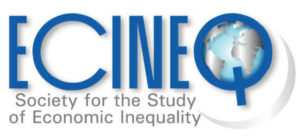Microsimulation analysis of optimal income tax reforms. An application to New Zealand
Working Paper 2018-468
Abstract
This paper examines the optimal direction of marginal income tax reform in the context of New Zealand, which recently reduced its top marginal income tax rate to one of the lowest in the OECD. A behavioural microsimulation model is used, in which social welfare functions are defined in terms of either money metric utility or net income. The model allows for labour supply responses to tax changes, in which a high degree of population heterogeneity is represented along with all the details of the highly complex income tax and transfer system. The implications of the results for specific combinations of tax rate or threshold changes, that are both revenue neutral and welfare improving, are explored in detail, recognising the role of distributional value judgements in determining an optimal reform.The potential impact of additional income responses is also examined, using the concept of the elasticity of taxable income. Results suggest, under a wide range of parameter values and assumptions, that raising the highest income tax rate and/or threshold, would be part of an optimal reform package.
Authors: John Creedy, Norman Gemmell, Nicolas Hérault, Penny Mok.
